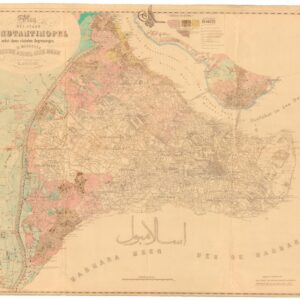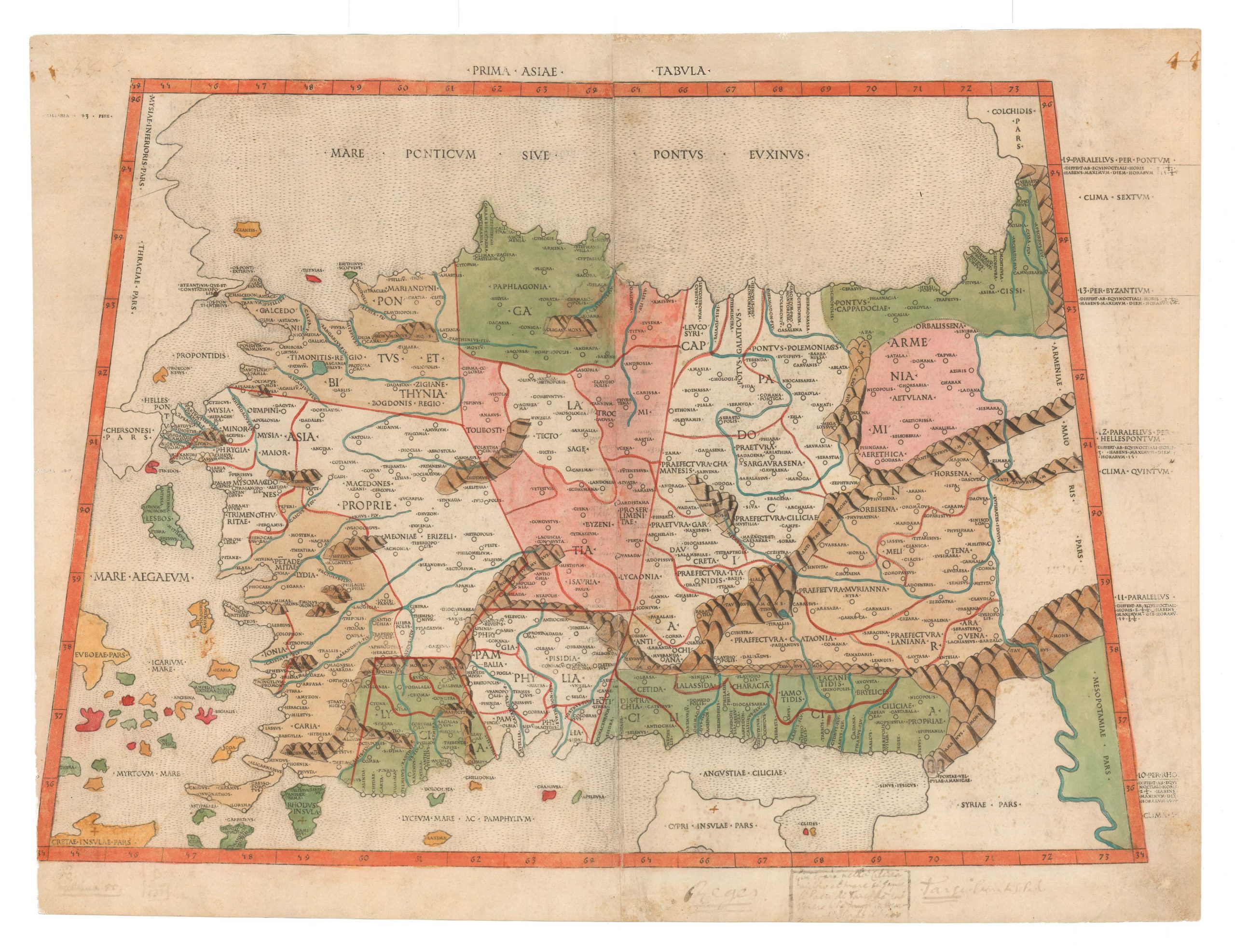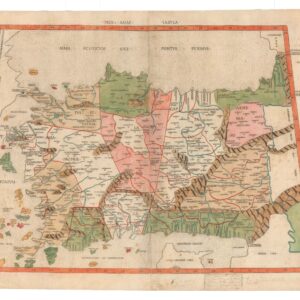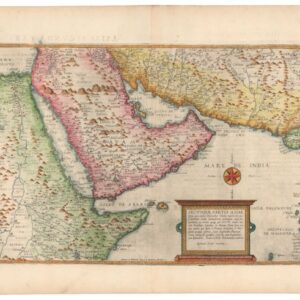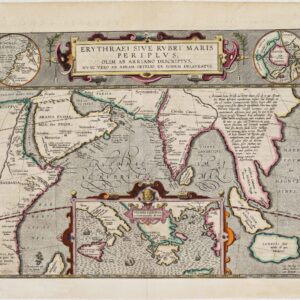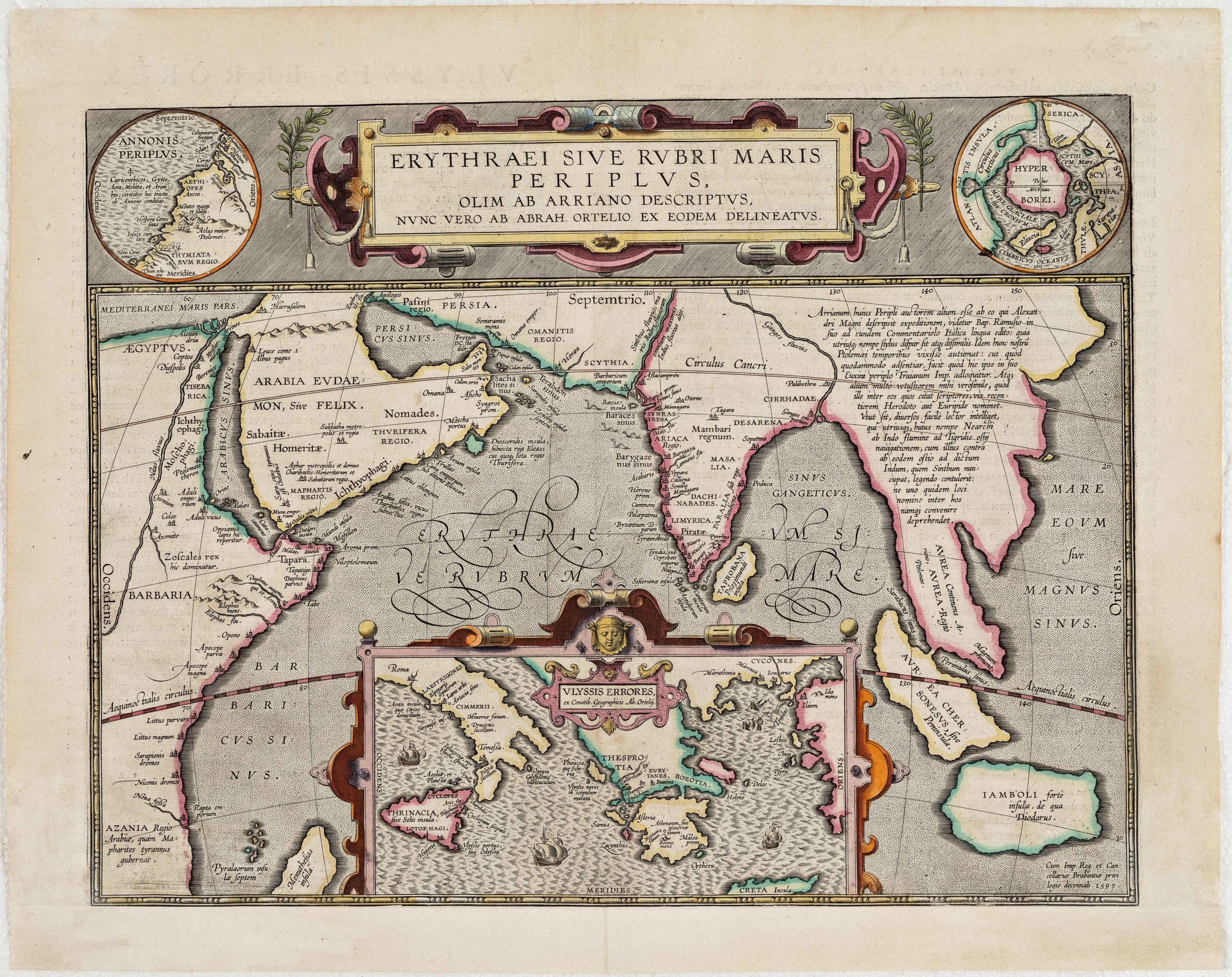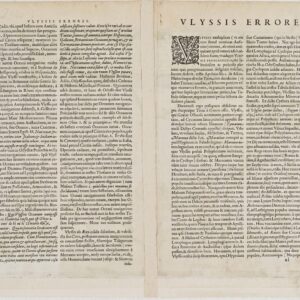Emanuel Bowen’s decorative 18th-century folio-map of the Ottoman Empire and the greater Middle East.
A New & Accurate Map of Turky in Asia, Arabia &c…
Out of stock
Description
This lovely and highly decorative map of the greater Middle East by renowned English mapmaker Emanuel Bowen was produced for the book ‘A Complete System of Geography,’ published in London in 1747. Expertly engraved, copies of this map on the market are often without color, reducing the strong visual impact and many details of the map. In our case, expert hand-coloring has heightened the geography and composition.
The map focuses on the Arabian Peninsula but includes all the major regions we associate with the Middle East, including Persia, Egypt and Libya, and Anatolia. The latter is significant, as most of the region depicted was under the control of the Ottoman Sultan in Istanbul. This included regions like Egypt and Thrace, but not Persia or Uzbek Tartaria, ruled by the illustrious Safavid dynasty. To many Europeans, these Muslim dynasties more or less constituted the same, and dynastic distinctions were rarely incorporated into maps such as these. Meanwhile, European cartographers strove to focus on specific geographic areas (here, Arabia and Anatolia) while playing on European preconceptions of the Orient in the decoration of their maps. This is precisely the trend we see on this map as well.
Throughout the map, regional delineations are highlighted with color. Within Arabia and Anatolia, the subdivisions have been fully colored in, underlining how these regions are the real focus of the map. The coloring is limited to highlighting borders in the more peripheral areas (e.g. Thrace, Northeast Africa, and Persia).
In addition to the geographical details, the map has been equipped with a standardized title cartouche surrounded by a splendid vignette that seems to compound European impressions of the Orient into a single image. At the front, we find two well-dressed men in oriental garb, including turbans. One of the men is seated on a large camel, which the other man seems to be walking alongside. The mounted gentleman is holding a sizeable unsheathed sword and is looking over his shoulder at two figures with a wagon in the background. The wagon is almost Chinese in appearance; an impression further echoed by discrete symbols on the sacks of goods that lay on top of the cartouche itself. These Chinese elements underline how vignettes such as these were based more on fantasy than on any accurate impression of the people in question. Behind the gentlemen with the wagon, we see the skyline of a desert township with minarets, palm trees, and great domed halls. Immediately above the vignette, we find an elegant four-point compass rose.
Cartographer(s):
Emanuel Bowen (1694-1767) was a British engraver, map-maker, and print seller, who was particularly well-known for his atlases and county maps. Bowen was widely acknowledged for his geographic expertise, and he was appointed as the official cartographer to both George II of England and Louis XV of France. Despite these appointments and the general acknowledgment, Bowen still died in poverty. Following his death, his London business passed to his son Thomas Bowen, who also seems to have struck on hard luck. Several of Emanuel Bowen’s apprentices would rise to fame after his death, including the illustrious English mapmakers Thomas Jeffreys and Thomas Kitchin.
Condition Description
Very good.
References
